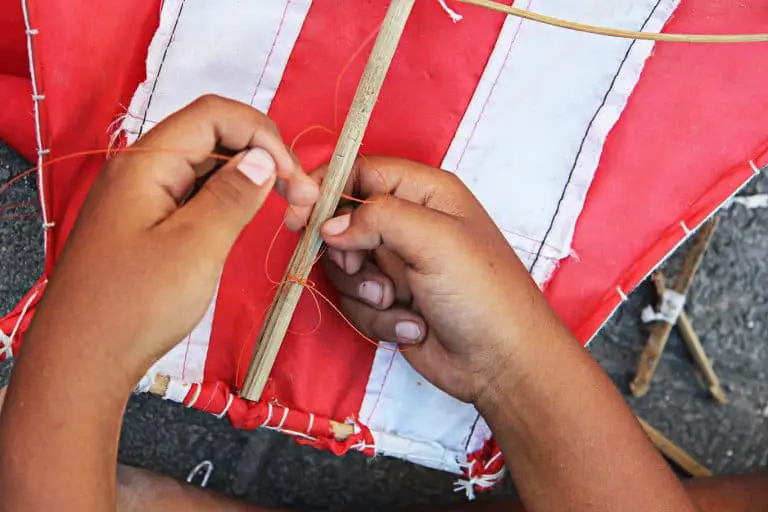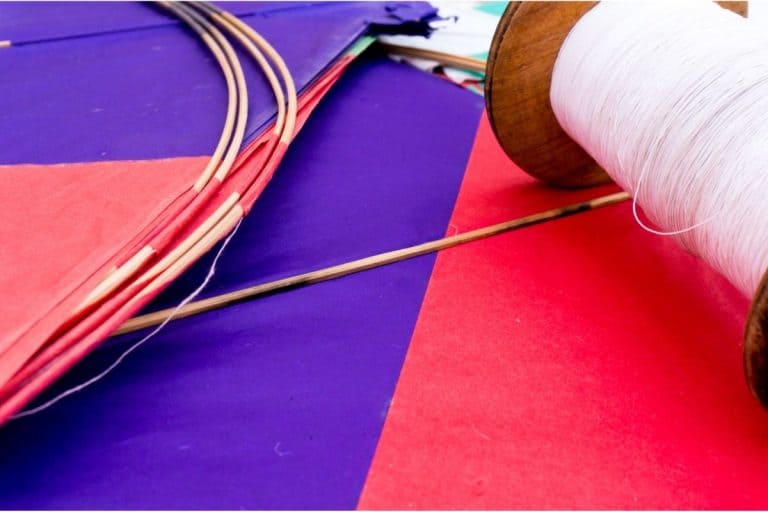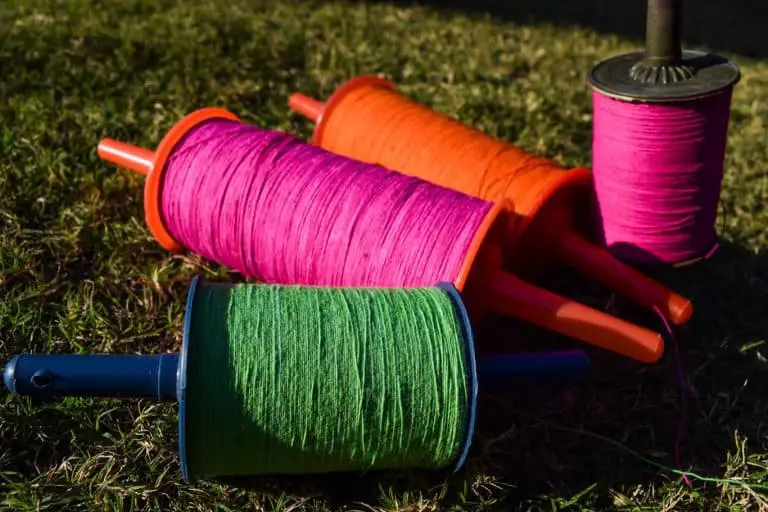The 3 Best Cord Manjas For Kites
The three best cord manjas for kites are the six cord, nine cord, and twelve cord Manja. The cords are the number of small lines combined to form a single thread. These cords can work on small, medium, and large kites.
Kite fighting is a sport that requires specialized lines known as cord manjas. In this article, we get into the three best cord manjas used for kites.
Which Cord Manja Is Best?
Kite fighting is a sport practiced in various regions, including India, Nepal, Afghanistan, Brazil, Chile, and Thailand. Specialized kites known as fighter kites are used in this sport. The ideal kites are small, flat, and have single lines (Source).
The end goal of kite fighting is for the kite fliers to cut down the kites of their opponents. It is done by using sharp kite lines. Line tension is critical and is used for control. The most common lines used for this practice are known as manjas. Their distinct feature is that they are glass-coated strands.
Cord manjas consist of pure cotton strings mixed with Manja paste. In the past, for Asian-type fighters, the paste was made of rice glue and crushed glass. It, however, changed as stronger glue, abrasives, and synthetic lines have been used instead in recent years.
Incorporating the foreign material (paste) essentially is to toughen lines. While some use crushed glass, others use additional material depending on preference. Some use metallic lines instead of cotton, and others attach knives to their lines.
Manja is known by different names in different regions. These include Charkhi, Dor, Manjha, Firkhis, and Lotai. There are different manjas on the market distinguished by the number of cords that they have.
A cord is the general strength that a line has. Cords are formed by joining tiny threads to form a single thread. The three significant cords include the six cord, nine cord, and 12 cord. The best cord Manja is one that efficiently cuts down the kites of the opponents. (Source).
Which Manja Is The Best 9 Cord Or 12 Cord?
Kite fighting is frequently conducted during particular festivals and seasons. Kite flyers tend to use colored Manja for easy identification while it’s in the sky. Once kite fighters cut down the kites of their opponents, the kite that’s cut drifts away.
Being a sport that has been around for years, kite fighting gets several spectators. These spectators run after the cut-down kites in an attempt to capture them.
The nine-cord Manja and the 12-cord Manja are the most popular manja used in kite fighting. The nine cord consists of 9 small threads combined to make one thread and the 12-cord Manja is made of 12 small threads. Medium kites and some large kites utilize the nine cord Manja. The 12-cord Manja is powerful and is mainly used on large kites (Source).
Which Cord is Best for Kite Flying?
Kite lines are a vital part of kite flying. Without the lines, it would be impossible to launch the kites. These lines connect the kite operator to the kite. Kite lines vary in length and material used. These two factors are essential and determine how the kite will behave in various winds.
The common materials kite lines are made of include silk, nylon, wire, and cotton. While cotton line is the most ideal in terms of safety, its use has declined over the years.
Just as one would care for their kite, one should also care for the kite lines. Other than the kite line specifications, handling them also determines the success of a kiting session. Chemical contact, repeated use, and UV rays all affect the lines. They experience wear, lose strength, and won’t function at their optimal level.
While not a universal opinion, some consider the nine cord Manja to be the best for kite flying. It is because of its all-rounded nature and ability to fly kites ranging from small to large.
Picking kite lines is as essential as picking kites. A line that’s too small may break, which will lead to damaging or losing the kite. It may also result in accidents that may harm those around you. On the other hand, a very large line will inhibit the kite from operating normally. The kite may not launch at all, and if it does, you won’t have control of it (Source).
Other characteristics to look out for when looking for an ideal kite line are stretch and slipperiness. Some lines stretch and remain that way, while others rebound after stretching. Slippery lines slide when they are twisted.
What Is A Chinese Manja?
Traditional Manja is common in kite fighting competitions. While this thread was originally made of pure cotton strands and mixed with abrasives to make it sharper, modifications have been made over the years. Individuals can prepare these mixtures and incorporate secret recipes, but most times, it’s manufactured by specialists on a large scale (Source).
The Chinese Manja, also known as chemical manja, is reasonably new to the market compared to the traditional manja. This kite line is made up of synthetic fibers that are non-biodegradable. It makes breaking them difficult, giving the kite operators an upper hand over their competitors.
However, while the Chinese Manja is effective in the sport, it’s considered unsportsmanlike because it’s difficult to break and it also poses a great danger to animals and humans. Several deaths have been associated with this line, and several governments have banned its use.
An incident in New Delhi saw an 18-year-old man killed when his throat was slit by a stray Chinese Manja. When the police arrived at the scene, they found a stray bloody Manja.
During festivals, incidents of bird and human injury are common. It has caused activists to insist on using threads that aren’t lethal. One of the reasons Chinese Manja has become more common than traditional manja is that it is less expensive.
Despite being banned by several governments, the manufacture and sale of this line is still prevalent. Activists also mention that after the Sankranti festival, the calls for bird rescues are usually on the rise. It happens after the monsoon, in particular, because birds are in search of safe places on trees to nest their young.
What Manja is Best For Cutting Kites?
As mentioned before, kite fighting involves kite lines that have abrasives coated on them. Different areas have different rules for the sport. The competition entails either two or more participants. The participant that cuts down their opponent’s kite wins. When the competition involves multiple people, the contestant who wins is whose kite is the last one flying.
There are two standard cutting methods that kiters use. They are release cutting and pull cutting. Release cutting involves reeling outlines, while pull cutting involves pulling the line. The skill of the kite flyer, speed, and agility also determine the winner.
Having the right line certainly does help. The six cord Manja, nine cord Manja and 12 cord Manja are all effective depending on the kites one intends on flying. The six cord is recommended for small kites, and the nine cord is recommended for small and medium kite sizes. The 12 cord is excellent for bigger kites.
Summary
When looking for cord manjas, kite flyers should consider the six cord, nine cord, and 12 cord Manja. A lot of care should be taken when handling these kite lines. Kite operators are responsible for their kite equipment, which also applies to kite lines.







